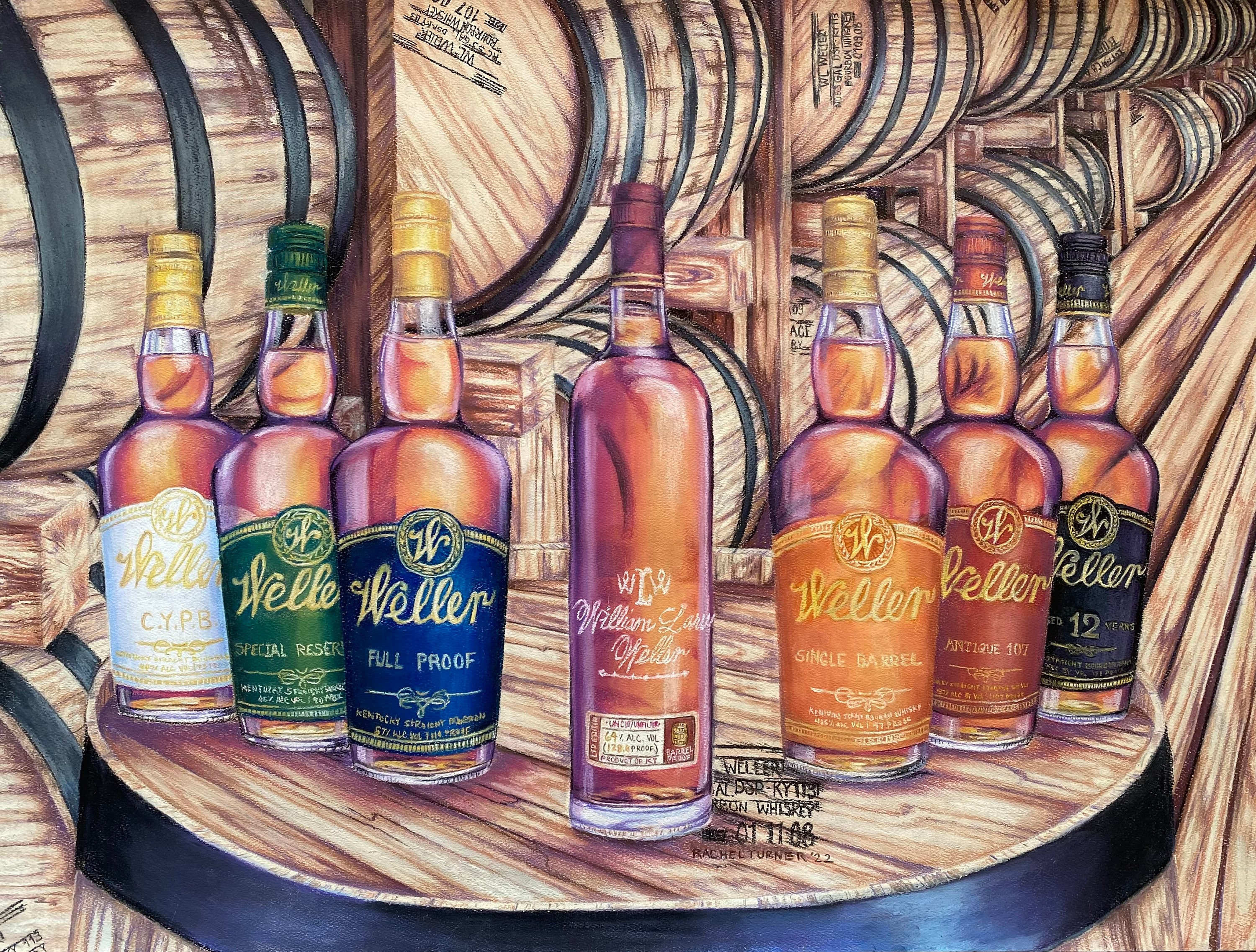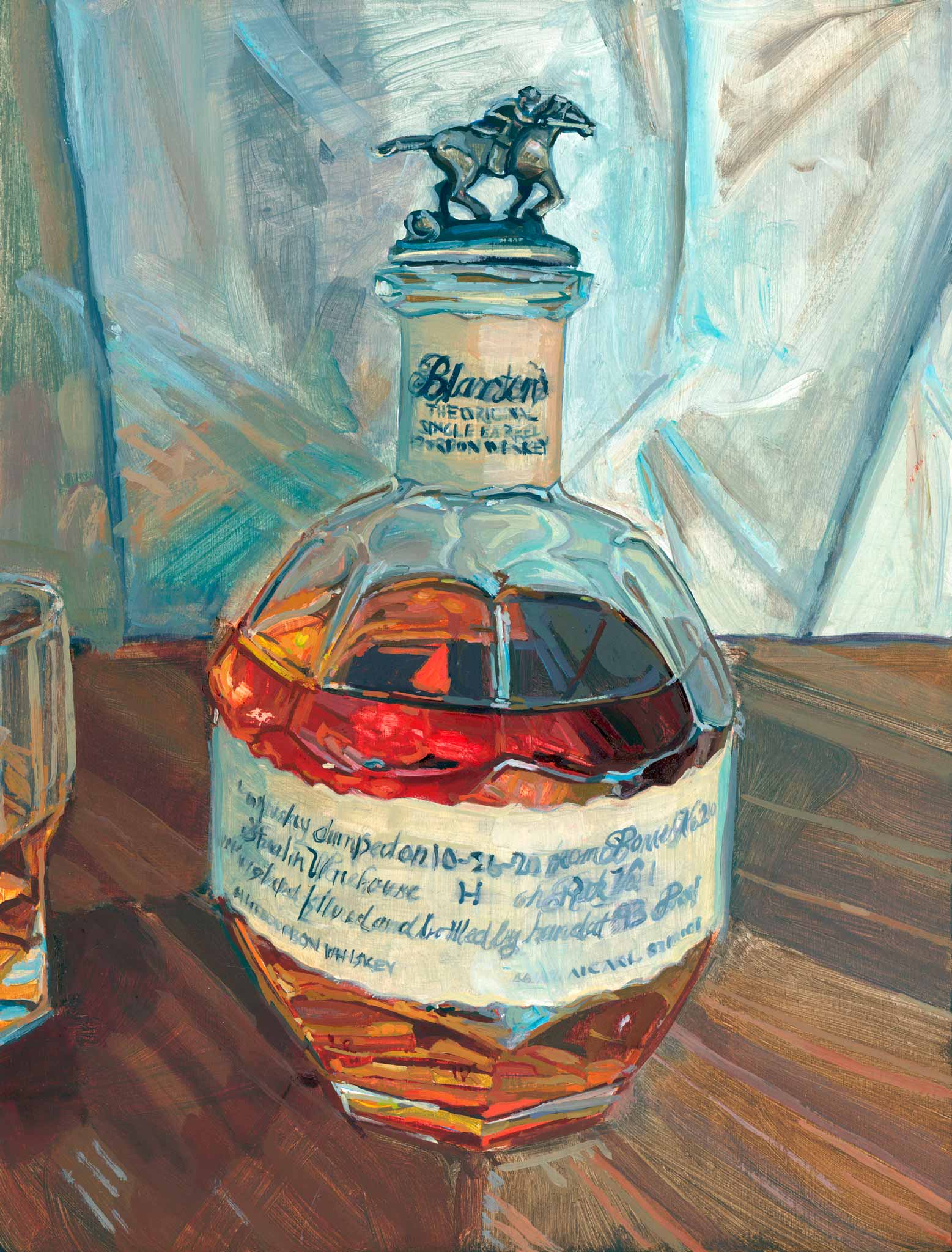Limited Edition: Discover Exclusive Bourbon Art Pieces for Collectors
Limited Edition: Discover Exclusive Bourbon Art Pieces for Collectors
Blog Article
The Importance of Whiskey Art in Celebrating Heritage and Craftsmanship in the Beverage Industry
The detailed relationship in between scotch art and the party of heritage and craftsmanship within the beverage industry can not be overstated. With attentively designed containers and labels, whiskey brands encapsulate their historic origins and the artisanal abilities that define their manufacturing approaches.
The Historic Origins of Whiskey
At the heart of whiskey's allure exists a rich tapestry of historical origins that trace back to old civilizations. The beginnings of scotch can be linked to the purification methods of the Sumerians and Babylonians around 2000 BCE, where very early kinds of fermented grain drinks began to arise. Nonetheless, it was in the Center Ages that the art of purification progressed substantially, particularly in Ireland and Scotland, resulting in the creation of scotch as we know it today.
The term "bourbon" itself obtains from the Gaelic word "uisce beatha," implying "water of life." This expression emphasizes the social value of bourbon in Celtic societies, where it was usually related to rituals, parties, and common bonding. By the 15th century, distillation came to be a recognized craft within reclusive communities, leading the way for the facility of lawful distilleries.
As profession routes expanded, whiskey's appeal grew, transcending regional borders and capturing the rate of interest of lovers worldwide. Whiskey Art. This historic journey reflects not just the workmanship behind whiskey manufacturing however likewise its essential duty in social and cultural contexts, noting it as a substantial drink throughout history
Artistic Expression in Branding
Whiskey branding stands as an engaging junction of virtuosity and commerce, where visual identification plays a crucial duty in shaping consumer perception. The aesthetics of whiskey tags, packaging, and marketing materials reflect not just the brand name's tale but likewise its core values and heritage. With imaginative expression, distilleries communicate a narrative that reverberates with customers, evoking emotions and triggering links.
Making use of shade, typography, and images in branding offers to separate products in a saturated market. For example, standard themes might evoke a feeling of authenticity and craftsmanship, while contemporary layouts can represent development and forward-thinking. This tactical imaginative direction enhances brand acknowledgment and commitment, permitting customers to forge an individual connection with the scotch they choose.
In addition, creative expression in branding typically acts as a party of regional heritage. Distilleries regularly include regional symbols or historic references into their layouts, developing a sense of place that welcomes consumers to take part in a wider cultural experience. Ultimately, the artistry behind bourbon branding not just improves visual appeal however additionally improves the overall narrative of the brand, fostering a much deeper recognition for the craftsmanship and heritage ingrained in each bottle.
Craftsmanship in Container Design
The artistry noticeable in whiskey branding extends past visual identity to encompass the workmanship associated with bottle layout. Each container serves as a vessel not just for the spirit within, but additionally for the story it informs concerning its custom, beginning, and high quality. The layout process needs precise interest to information, as elements such as form, closure, and product contribute significantly to the overall assumption of the bourbon.
Craftsmanship in container design involves choosing high-grade glass that can boost the bourbon's shade and clarity, while also providing a tactile experience for the customer. The silhouette of the bottle have to be both visually attractive and practical, commonly showing the heritage of the brand name. Many distilleries go with distinct forms or embossed logo designs that stimulate a sense of authenticity and history.
Moreover, the tag layout and typography play a crucial role in communicating the brand name's story. Whiskey Art. A well-crafted container not just mesmerizes the consumer's eye but also reinforces the brand name's commitment to top quality and practice. In this means, the craftsmanship of container layout ends up being a vital facet of the scotch experience, combining artistry with a profound regard for heritage
Social Relevance of Whiskey Art
Celebrating practice and craftsmanship, the social relevance of bourbon art goes beyond plain visual appeals, intertwining with the historical and social stories of the areas where it originates. Each bottle works as a canvas, depicting the special tales, mythology, and traditions that have actually formed local whiskey-making practices. The complex layouts frequently show the heritage of the distillers, integrating icons and concepts that resonate with the society and values of their areas.

In addition, scotch art here plays an essential duty in common gatherings and celebrations, acting as a concrete web link in between people and their shared experiences. By valuing the creativity in whiskey product packaging, consumers cultivate a deeper understanding and respect for the craft, ultimately enriching their enjoyment of the beverage itself.
Modern Trends in Whiskey Discussion
Recently, the presentation of bourbon has actually developed to show modern preferences and fads while still honoring traditional workmanship - Whiskey Art. Distilleries are increasingly focusing on aesthetic components that boost the total drinking experience, linking the void in between heritage and modernity
Innovative container designs have actually arised, frequently incorporating lasting materials and imaginative tags that tell engaging tales. Numerous brands now work together with neighborhood artists, instilling their items with one-of-a-kind aesthetic expressions that resonate with consumers. In addition, limited-edition launches are typically packaged in collectible containers, including worth and charm for lovers.

Verdict
Finally, bourbon art works as an important avenue for sharing the heritage and craftsmanship fundamental in the beverage sector. Through detailed branding, innovative bottle designs, and culturally substantial artistic elements, bourbon brands efficiently recognize their practices and connect with consumers. This creative narrative not just boosts the admiration of scotch however additionally reinforces area identification and satisfaction amongst manufacturers. Inevitably, bourbon art plays a vital function in preserving and commemorating the abundant social tapestry of whiskey-making.


Workmanship in container style includes his response selecting premium glass that can boost the scotch's shade and clarity, while likewise supplying a responsive experience for the consumer. In this means, the workmanship of bottle layout becomes an essential element of the whiskey experience, combining creativity with an extensive regard for heritage.
In final thought, scotch art offers as a crucial conduit for sharing the heritage and craftsmanship integral in the beverage sector.
Report this page